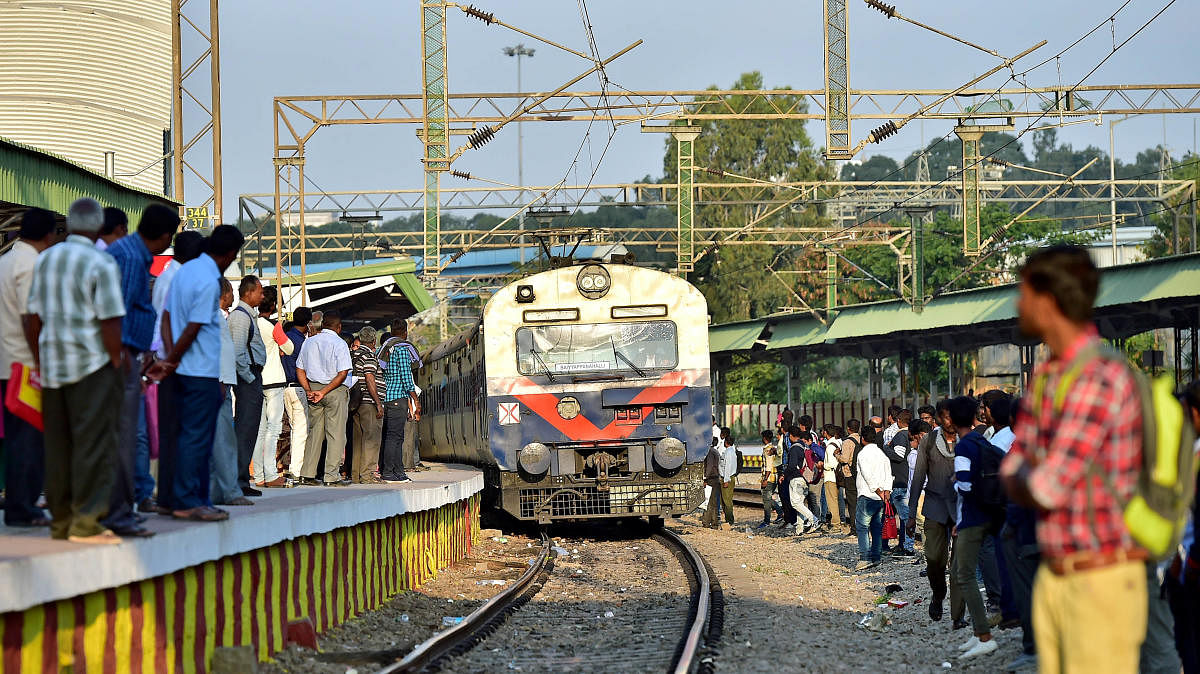
Three months have passed since Prime Minister Narendra Modi announced that the Bengaluru Suburban Rail Project (BSRP), stuck on discussion tables for 40 years, would be completed in 40 months.
The union government, while approving BSRP in October 2020, had announced a 2026 deadline, but also recommended prioritising one of its four corridors, connecting the city with its airport, with an October 2023 deadline.
The airport line, corridor 1, gains significance against the backdrop of projected traffic growth at the Kempegowda International Airport (KIA) and its potential impact on Bengaluru’s roads.
Meanwhile, K-RIDE – the joint venture formed by the state government and the Railways to implement BSRP – has initiated civil works on another corridor.
The Rs-15,767 crore project has a total route of 148.17 km, spread over four corridors – Sampige line (KSR – Yelahanka–Devanahalli) at 41.4 km, Mallige line (Baiyappanahalli–Chikkabanavara) at 25.01 km, Parijata Line (Kengeri–Whitefield) at 35.52 km and Kanaka Line (Heelalige–Rajanukunte) at 46.24 km.
The civil works tender for corridor 2 (Mallige line) has been formalised and work is scheduled to be completed in 27 months.
Future-ready option
“The traffic to and from the airport is severely congesting many of the city’s main and arterial roads. The numbers are set to double with the opening of the second KIA terminal. The focus has to be on this corridor, because it could take a substantial amount of traffic off the roads. It makes sense to start work on this line first, because it is the corridor which requires the least extent of land acquisition,” Rajkumar Dugar, convenor of Citizens for Citizens, said.
Administrative apathy has already cost BSRP about 20 months, he said.
Sources in K-RIDE said the project was on schedule for a 2026 launch, but work on the airport corridor would be taken up only in the second phase.
“The first phase of the project covers the second and fourth corridors (Mallige and Kanaka lines). Work on the other two corridors will commence later,” a senior official in K-RIDE told DH.
Some of the pro-BSRP activists argued that projecting Namma Metro as a silver bullet that could address all of Bengaluru’s transportation concerns has also halted the project on its tracks.
They pointed out the pace at which work on the Bengaluru Metro Rail Corporation’s airport line has progressed, while BSRP’s airport corridor is yet to pick pace.
The difference is in the land acquisition, according to Prakash Mandoth, president of the Bengaluru Metro and Suburban Rail Passengers’ Association.
“When an independent agency acquires the land at market prices, the processes become easier. With a project like BSRP, land acquisition is invariably disputed,” he said.
Mandoth said the authorities had agreed, in principle, to consider the association’s proposal to extend BSRP corridors to circular routes that could cover areas including Hosur, Doddaballapur, and Bangarpet in the latter phases of the project. “There is a need to stop pursuing transportation projects in isolation and devise multi-modal solutions,” he said.
Low ridership
The delays in implementing a suburban rail project for Bengaluru, widely attributed to lack of political will, also have a context in the untapped potential of the existing South Western Railway (SWR) line connecting Devanahalli.
SWR runs eight pairs of trains connecting KSR, Cantonment, Yeshwantpur and Yelahanka with Devanahalli.
Data compiled by Citizens for Citizens on arrivals at and departures from the KIA railway station on five MEMU trains, between July 29 and September 17, showed an average of 18.1 arrivals and 11.5 departures per day. The MEMU train ride from the city to KIA takes around 50 minutes, with tickets priced up to Rs 35.
Activists have been proposing the doubling of the 24-km single track between Yelahanka and Devanahalli and as a temporary measure, upgrading Doddajala – which falls midway through the line – from a halt station to a crossing station.
‘Leverage existing lines’
Dugar said the way forward was in leveraging the about 500 km of railway tracks available in and around Bengaluru.
Better coach maintenance, increased frequency of shuttle bus services and awareness campaigns will help reverse the ridership setback, he said.
“The need is for a consistent, reliable service. If that is in place, the patronage will follow,” he said.